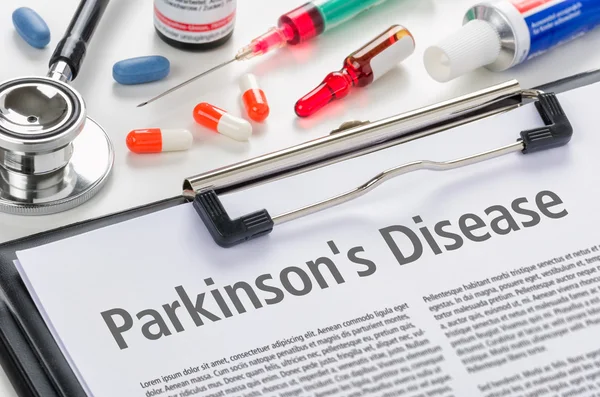Yes, some risk factors for Parkinson’s Disease are avoidable. Researchers have identified several avoidable risk factors for Parkinson’s Disease (PD) in a recent study published in Npj Parkinson’s Disease. This study is significant because it provides valuable information for developing strategies to prevent PD and reduce its global burden.
Parkinson’s disease is a chronic nervous system disorder that affects movement. Its cause is unknown but believed to involve both genetic and environmental factors. Common symptoms include tremors, stiffness, slowness of movement, and balance problems.

Recent research shows Researchers have identified several avoidable risk factors and there’s no cure, but treatments manage symptoms. These include medications, surgery, exercise, physical & occupational therapy. Living with Parkinson’s is possible with proper care and support.
Table of Contents
Avoidable Risk Factors:
- Exposure to pesticides and herbicides: Studies have shown a link between exposure to these chemicals and an increased risk of developing Parkinson’s. Reducing or eliminating exposure, particularly for individuals in agricultural or related professions, may be beneficial.
- Military-related chemical exposures: Certain chemicals used in military settings have also been linked to Parkinson’s. Addressing these exposures and implementing preventative measures for military personnel could potentially help mitigate the risk.
- Repeated head trauma: Head injuries sustained through sports, accidents, or other means have been associated with an increased risk of Parkinson’s later in life. Wearing protective gear and taking measures to prevent head injuries can be helpful.
- Diet: A diet rich in fruits, vegetables, and whole grains, and low in saturated and trans fats, may be associated with a lower risk of Parkinson’s.
- Exercise: Regular physical activity has been shown to have numerous health benefits, including potentially reducing the risk of Parkinson’s. Aiming for at least 150 minutes of moderate-intensity aerobic activity or 75 minutes of vigorous-intensity aerobic activity per week, along with muscle-strengthening activities at least twice a week, is recommended.
- Smoking: Smoking has been linked to an increased risk of Parkinson’s. Quitting smoking can significantly improve overall health and potentially reduce the risk of developing the disease.
Non-Avoidable Risk Factors:
- Age: The risk of developing Parkinson’s increases significantly with age. While this factor cannot be altered, understanding the age-related risk can be helpful for individuals and their families.
- Sex: Men are more likely to develop Parkinson’s than women. Although the reason for this difference is not fully understood, it is a non-modifiable risk factor.
- Genetics: Having a family history of Parkinson’s increases the risk of developing the disease. While individuals cannot change their genes, genetic testing can help understand personal risk and make informed decisions about future healthcare.
Important Considerations:
- The research on avoidable risk factors is still evolving, and more studies are needed to confirm the findings and determine the precise mechanisms involved.
- Even if some risk factors are avoided, other factors may still contribute to the development of Parkinson’s.
- Implementing healthy lifestyle changes can improve overall health and well-being, regardless of their impact on Parkinson’s risk.
About The Study
Background:
- PD is a progressive neurological disorder with no known cure.
- Identifying and eliminating risk factors is considered the most effective way to reduce PD incidence.
- Previous studies focused on relative risk or odds ratio of PD, but not the disease burden associated with each risk factor.
Study Design:
- This study aimed to estimate the population attributable fraction (PAF) of various PD risk factors.
- PAF represents the proportion of cases that could be prevented by controlling the risk factors.
- 981 participants with PD and 485 healthy controls were recruited from the Deep South of the United States.
- Participants completed questionnaires to assess environmental, lifestyle, and familial risk factors.
Key Findings:
- Higher prevalence of weight loss, constipation, and REM sleep behavior disorder (RBD) was observed in the PD group.
- Family history of PD and exposure to pesticides/herbicides were identified as risk factors for both genders.
- Repeated blows to the head during sports or combat were linked to increased PD risk in men.
- Exposure to military-grade chemicals was also found to be a risk factor for men.
- The PAF for modifiable risk factors was calculated.
- Pesticide/herbicide exposure, military-related chemicals, and blows to the head were estimated to contribute to 30% of PD cases in men.
- These findings are consistent with previous studies suggesting higher rates of neurological disorders in athletes, particularly those involved in collision sports.
Identified risk factors:
- Family history of PD
- Exposure to pesticides/herbicides
- Mild/moderate traumatic brain injury (MTBI) requiring hospitalization or causing concussion (link only observed in men)
- Repeated blows to the head during sports or combat (link only observed in men)
- Exposure to military-grade chemicals (higher risk in men)
PAF for modifiable risk factors:
- Pesticide/herbicide exposure: 17% in men, 23% in women
- Military chemical exposure: 6% in men
- Blows to the head: 10% in men
- Overall, these factors were responsible for 30% of PD cases in men.
Limitations:
- The study was unable to identify specific chemicals responsible for PD.
- Self-reported exposure data might not capture all sources of exposure.
- PAF estimates are population-specific and may vary depending on the prevalence of risk factors.
Conclusions:
- This study provides evidence that repeated blows to the head, a common occurrence in collision sports, can increase PD risk.
- Several modifiable risk factors for PD were identified in both men and women.
- By eliminating these risk factors, PD incidence can potentially be prevented in some populations.
Further Research:
- Future studies are needed to investigate the specific chemicals responsible for PD.
- More accurate exposure assessment methods are required to improve PAF estimates.
- Studies across diverse populations are necessary to understand the generalizability of these findings.
Additional Points:
- The study’s findings align with previous research indicating a higher risk of neurological disorders in athletes.
- Despite the limitations, the study provides valuable insights into the potential for preventing PD by addressing modifiable risk factors.
Resources:
- National Parkinson Foundation: https://www.parkinson.org/
- Michael J. Fox Foundation for Parkinson’s Research: https://www.michaeljfox.org/
- Parkinson’s Disease & Movement Disorders Center at Johns Hopkins Medicine: https://www.hopkinsmedicine.org/health/conditions-and-diseases/parkinsons-disease









